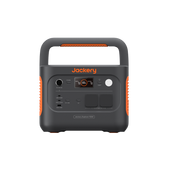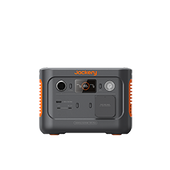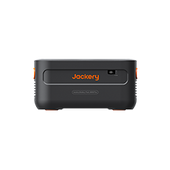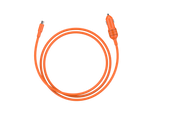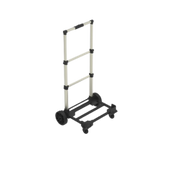Clean Energy and European Homes
To better understand your renewable energy options, you should first consider the type of energy being used in European homes.
Major Sources[2]
Households across Europe use electricity for various purposes. Typically, a household needs energy for cooking, heating, lighting, and running household appliances.
However, if you talk about the source of energy, natural gas remains the dominant energy source in the residential sector, accounting for 30.9% of the EU's final energy consumption. Electricity follows this at 25.1%. Renewables accounted for 22.6%. This is followed by petroleum products, which account for 10.9%, and a small portion is covered by coal products or solid fossil fuels (2.3%).
Europe’s Renewable Energy Targets[3]
The European Union aims to reduce net greenhouse gas emissions by at least 55% by 2030 and become a completely climate-neutral continent by 2050. With these goals in mind, governments cannot overlook the energy sector, which is responsible for over 75% of the EU's greenhouse gas emissions.
Previously, the Renewable Energy Directive (RED) aimed to reduce greenhouse gas emissions by 20% and simultaneously increase the share of renewable energy by 2020. Building on the 20% target, the RED established a new renewable energy target aiming for at least 32% by 2030. But then revisions in 2023 raised the EU binding renewable Target to a minimum of 42.5% by 2030. In other words, Europe aims to double the existing share of renewable energy consumption.
Challenges
Houses across Europe are facing several energy challenges, particularly with the shift toward renewable energy sources. These include a need for electricity supply security. As of now, most renewable energy sources, such as wind and solar, are entirely unpredictable and are not sufficient as a long-term energy supply. This may even exacerbate market supply concerns.
It is not just the markets but also the base infrastructure of Europe that needs working. As energy production increases with renewable energy sources, the ageing electricity distribution networks must be reinforced to handle the increased power supply and demand.
And all of this cannot be overlooked when there is the wider concern of rising costs. Increasing investment in energy infrastructure and decarbonization can lead to higher household utility bills.
Comparison of Major Clean Energy Types in Europe
This is one of the most opportune times to invest in renewable energy for your household. Here is an overview of the major clean energy types currently available in Europe.
1. Solar Energy
Solar energy is one of the fastest-growing energy sources across the EU. It uses the sun's energy to generate electricity, which is limitless and readily available. Even the cost of solar panels has decreased by 82% from 2010 to 2020.[4]
Advantages
Solar energy offers several advantages for households across Europe. For one, it is an abundant supply of power since it uses the sun's energy. Traditional generators rely on fossil fuels such as diesel and petrol to operate, but solar power generators only need to be exposed to sunlight. So, you are essentially only putting in the upfront cost of the generator. You don't need to invest any further in fuel to operate the generator and, in turn, generate electricity. In this way, solar generators help save costs in the long run.
Solar energy is also one of the energy sources that demand the least maintenance while making you energy-independent. It is particularly popular in southern Europe, where the Mediterranean climate features clear sunny skies.
Challenges
With shorter daylight hours, residents in northern Europe have less time to recharge their solar panels, so they may use the energy generated at night. This makes it a questionable investment for residents in the north, especially when the upfront costs of some high-end solar generators are challenging to work with.
Apart from this, solar energy poses a significant challenge in the form of storage needs. The energy you generate cannot be used as it is produced and must be stored in a battery unit for future use. If you want to power more appliances, you must have more battery packs. Some households do not have space to deploy the solar generator, let alone invest in additional storage.

2. Wind Energy
Wind energy is one of the many popular clean energy resources across Europe. As the name suggests, this is energy generated from the kinetic energy of wind. Kinetic energy is the form of energy an object possesses because of its motion. The wind turbines you see on wind energy production farms capture the wind's kinetic energy to run generators that produce electricity.
Advantages
One of the first advantages to recognize is that Europe is a leader in wind energy development, particularly offshore wind energy. In the EU, wind energy accounted for over one-third of the total electricity generated from renewable resources in 2022.[5] Take Denmark, for example[6]. 56% of its electricity demand is covered by wind energy! This means it has the necessary infrastructure needed to generate wind energy on a large scale. Furthermore, like solar energy, wind energy is clean energy, free of emissions.
Challenges
One of the biggest challenges posed by wind energy is the irregularity of wind speeds in areas across Europe. Not all areas receive the high-speed winds needed to run wind turbines, and without wind, you won't be able to generate electricity. Therefore, installation is only feasible in select areas.
Furthermore, wind generators are far more challenging to maintain than solar panels since they contain moving parts. The friction generated with movement can degrade the machinery over time. It is also important to note that wind energy is cheaper than solar energy, but only when deployed on a large scale. Individual residential wind power units are not quite feasible.
3. Hydropower
Hydropower, or hydroelectric power, is a type of renewable energy that uses the kinetic energy of moving water to generate electricity. Water turbines use fast-rushing water to run generators that convert the kinetic energy into usable electricity.
Advantages
One of the most significant advantages of hydropower is its overall efficiency. It can convert as much as 90% of the available energy into electricity. Compare this to solar panels, which are only about 22 to 25% efficient! Not only are they efficient, but they are also quite suitable for the geographical regions of Europe. The Alps Mountain ranges in South Central Europe stretching from France to Germany and Slovenia are highly suitable for hydroelectric plant installations. Large parts of the existing river systems are already equipped with hydroelectric power plants to generate electricity.
Challenges
While hydroelectric power itself is clean and eco-friendly, the construction of dams, reservoirs, and hydroelectric generators can heavily impact wildlife habitat. Dams can obstruct fish migration and heavily impact marine life. Due to its environmental impacts, particularly on ecosystems, it may not be the best option.
4. Biomass Energy
Biomass is a type of renewable energy source derived from plants and animals. Some forms of biomass, like wood, can be burned directly for cooking and keeping warm. In other cases, the organic matter must be first broken down to release gas. Clean energy, therefore, can be burnt to create heat or converted into electricity.
Advantages
One of the biggest benefits of biomass is that it helps reduce waste. Wood and wood processing waste, such as wood pellets, wood chips, sawdust, etc., and even agricultural waste, such as woody plants, algae, and food processing residues, can all be converted into biomass. This helps reduce waste issues on land.
Challenges
One of the significant challenges of biofuel production is ensuring it remains sustainable. As it stands, there is strong competition between using land to generate biomass while also ensuring food security. With limited land, biomass will need further deforestation and land use if it is to be expanded.
5. Geothermal Energy
Geothermal energy is renewable energy extracted from the Earth's crust. Within the Earth's layers are fiery magma, hot reservoirs of water, and strong heat energy, which can be harnessed for electrical power generation.
Advantages
Geothermal energy represented only 0.5% of Europe's global renewable energy market in 2022. It is slowly and subtly on the rise. Geothermal energy, in particular, is popular across Iceland, which houses over 200 volcanoes, offering plenty of opportunities for geothermal energy production. In fact, nearly 90% of homes in Iceland are currently heated by geothermal energy.[7] Some even use geothermal energy for direct heating of homes and baths, not just electricity production.
Another major advantage that many are not familiar with is the stability of geothermal energy. This unique source of power is not affected by weather conditions, changing seasons, or climates and is available 24 hours a day throughout the year.
Challenges
The most obvious challenge with geothermal energy is that it can only be generated in limited areas. Not all areas have active volcanoes or geyser sites that might deliver geothermal energy. Most sites are remote and far away from load centres, which makes it difficult to use the power resources.
6. Hydrogen Energy
Finally, we have hydrogen energy, which is the process of using hydrogen and hydrogen-containing compounds to produce clean energy that can be used for all other practical purposes. Hydrogen carries vast amounts of energy and is formed from just two molecules of hydrogen. It lacks carbon, which makes it a zero-carbon energy source. Even today, there are cars that run on hydrogen fuel cells!
Advantages
Europe is actively promoting the hydrogen economy, particularly focusing on green hydrogen for electricity production. Hydrogen is produced by fitting the hydrogen from water molecules to produce pure hydrogen, clean energy, and no harmful byproducts. This is a clean power source that only emits water vapour and leaves no residue.
Challenges
One of the greatest challenges posed by hydrogen energy is that it is still a budding technology and has yet to become mainstream. With other more widely available resources, setting up the production and storage infrastructure can be highly costly. It is still far too early to begin using it at the residential level.

Advantages of Jackery Portable Power Stations
Jackery is one of Europe's largest clean energy producers, offering a wide range of portable power stations. The company is widely recognized as a proponent of clean and green energy that is sustainable and easily accessible for all. Our clean energy solutions further come in a wide range of sizes so you can find the best fit for your home.
One of our bestsellers is the Jackery Solar Generator 2000 Plus, which features a stunning 2kWh battery capacity. The one thing users love about this model is that it can be expanded from 2 kW to 12 kW capacity. You can start with a base of 2 KW and build it up over time as you choose to reduce your reliance on the grid. With its expansive battery, it is capable of powering even heavy-duty equipment up to 3,000 W.
But don't assume that the 2kWh battery capacity is not sufficient. Rather, it is just enough for a complete day of outdoor camping or your outdoor events. Thanks to its portable design, you can carry it with you wherever you go. But when you are not using it on the road, you can use it at home as a backup emergency power supply. The versatility and reliability of this model are what set it apart from other providers.
Final Thoughts
European households are shifting to green and clean energy as part of the wider energy shift happening. You are encouraged to review the many options available and decide the best one for your home. Each has its own pros and cons, so make your decision wisely. Choose affordable and clean energy solutions that best serve your needs. Solar electricity remains one of the most widely popular choices for residential home power systems. If you wish to invest in a solar power generator, check out our range of products.
References
[1] Renewable Energy Generation in the EU. Available at:
https://www.weforum.org/stories/2024/01/renewable-energy-transition-generation-eu/ (Accessed: November 29, 2024)
[2] Energy consumption in households. Available at:
https://ec.europa.eu/eurostat/statistics-explained/index.php?title=Energy_consumption_in_households (Accessed: November 29, 2024)
[3] Renewable energy targets. Available at:
https://energy.ec.europa.eu/topics/renewable-energy/renewable-energy-directive-targets-and-rules/renewable-energy-targets_en (Accessed: November 29, 2024)
[4] Solar energy. Available at:
https://energy.ec.europa.eu/topics/renewable-energy/solar-energy_en (Accessed: November 29, 2024)
[5] EU wind energy. Available at:
https://energy.ec.europa.eu/topics/renewable-energy/eu-wind-energy_en (Accessed: November 29, 2024)
[6] Wind energy in Europe Outlook. Available at:
https://windeurope.org/intelligence-platform/product/wind-energy-in-europe-2023-statistics-and-the-outlook-for-2024-2030/ (Accessed: November 29, 2024)
[7] Geothermal Iceland. Available at:
https://energytransition.org/2023/03/geothermal-iceland-this-land-of-fire-and-ice-is-pushing-the-limits-of-its-natural-energy/ (Accessed: November 29, 2024)















